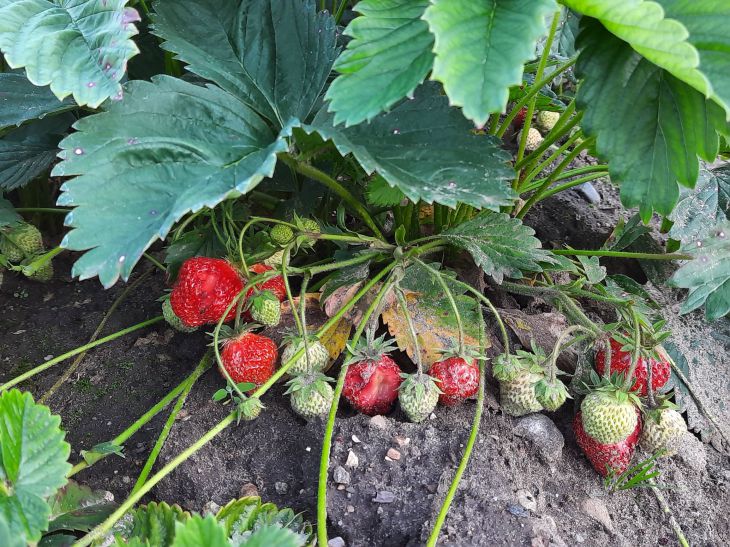- Why autumn feeding is necessary
- Organic fertilizers
- Ash as a source of potassium
- Mineral fertilizers
- Mulching as a method of fertilizing
- Timing of fertilization
- Fertilizer application technique
- Folk remedies
- Features of fertilizing young and old plantings
- Mistakes in autumn feeding
- Preparing for winter
- Individual approach
How to feed strawberries in the fall before winter: secrets of a sweet harvest
In the autumn, strawberry beds are prepared for a long period of dormancy in the winter.
Proper feeding during this period will ensure a rich harvest next season.
An expert of the online publication "BelNovosti", agronomist and landscape designer Anastasia Kovrizhnykh emphasizes: autumn care for strawberries will pay off a hundredfold when the time comes to pick the juicy berries.
Why autumn feeding is necessary
Many novice gardeners are perplexed: why feed a plant that is about to go dormant?
However, it is in autumn that strawberries accumulate strength for future fruiting. Correctly selected fertilizers will help the plant survive the cold and prepare for spring awakening.

Organic fertilizers
Compost is an ideal organic fertilizer for strawberries. Rich in nutrients, it slowly releases them into the soil, providing the plants with everything they need.
Compost can be replaced with humus or well-rotted manure. The main thing is not to overdo it, so as not to cause root burn.
Ash as a source of potassium
Wood ash contains potassium, phosphorus and many microelements. It helps strawberries strengthen their immunity and prepare for the winter cold.
Ash can be sprinkled on both the soil around the bushes and the plants themselves, which will help protect them from pests.
Mineral fertilizers
Phosphorus-potassium mixtures will help strawberries accumulate nutrients in the roots.
It is important to avoid nitrogen fertilizers that stimulate the growth of green mass - in the fall, this can harm the plant. Potassium and phosphorus, on the contrary, will strengthen the root system and increase frost resistance.
Mulching as a method of fertilizing
Mulching the beds with fallen leaves, straw or pine needles will not only protect the roots from freezing, but will also enrich the soil as the organic matter decomposes.
This method is especially effective in regions with harsh winters.
Timing of fertilization
Fertilizing should be done 3-4 weeks before the onset of persistent cold weather. Plants should have time to absorb nutrients, but not begin active growth.
Be guided by the weather forecast and climate characteristics in your region.
Fertilizer application technique
Dry fertilizers are scattered around the bushes, trying not to get on the leaves and stems of the plants. Liquid fertilizers are added to pre-moistened soil.
After applying fertilizer, it is recommended to mulch the beds to retain moisture and nutrients.
Folk remedies
Some gardeners prefer to use folk remedies to feed strawberries. For example, onion peel infusion is rich in microelements and helps to increase the immunity of plants.
Banana peels buried near bushes slowly decompose, releasing potassium into the soil.
Features of fertilizing young and old plantings
Young strawberry bushes planted this year require a more gentle feeding regime.
Light mulching and minimal amounts of fertilizer are sufficient for them. Old plantings, on the contrary, require more intensive feeding to maintain fruiting.
Mistakes in autumn feeding
Over-zealousness can harm strawberries no less than lack of care. Excessive fertilizers can cause root burn or provoke untimely growth.
It is important to follow the recommended dosages and not get carried away with nitrogen-containing compounds.
Preparing for winter
In addition to fertilizing, in the fall it is necessary to carry out sanitary pruning of strawberries, removing old and diseased leaves.
This will help prevent the development of diseases and improve air exchange. After pruning and fertilizing, the beds are covered, protecting the plants from frost.
Individual approach
Every site is unique, and what works well for your neighbor may not work for your strawberries.
Observe the plants, experiment with different types of fertilizers in small quantities. Over time, you will find the perfect recipe for your beds.
